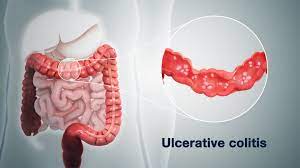THE ROLE OF NEUROMEDIATORS IN SKIN CONDITIONS
The skin is unique in many ways. It is the largest body organ, after the inclusion of the subcutaneous adipose tissue, protecting against environmental stressors, thus maintaining the entire body’s integrity and homeostasis. The skin quality may reflect the condition of other organs that are connected via the vast network of blood vessels and nerve fibers, e.g., skin-brain or skin-gut axes. The cutaneous neuroendocrine system along with the balanced microbiome plays a central role in maintaining regulatory functions. Neuromediators utilized by these systems act as cross-functional communicators, impacting skin functions and appearance. Finally, skin is perceived visually and tactile by us and analyzed instantly defining the way we perceive ourselves and others. Now it is becoming clear that skin functions and roles are far more complex and profound than thought before.
The current trends in modern cosmetic sciences focus on personalization that addresses an individual’s skin concerns in a causative manner. Thus, for example, targeting an off-tuned element (neuromediators) of the HPA axis, observed in prematurely aged skin, a phenomenon that is prevalent in flight attendants due to stress and impaired circadian rhythm, can be a great representation of neuromediators contribution toward personalization. The skin microbiome is another promising area where neuromediators can contribute to healthy-looking skin by facilitating the optimal conditions that foster microbiome diversity.
Therefore, there is an unmet need to provide a fair balance of information about the product, in particular, the featured technology, i.e. unique formulation | active ingredients. Consumers should have access to scientifically sound data delivered to them in a clear and easy-to-follow way. Ideally, a smooth translation of the featured technology (formulation /active ingredient) to the final benefit (claims) should be provided in a sequel of logical steps: WHAT -> WHY -> HOW -> BENEFIT.
For Example, New technology featured in a product (WHAT) inhibits melanin production with in vitro assays (WHY). As a result, the decreased melanin levels are measured in the skin, in vivo, with skin colourimeter or spectrophotometer (HOW). Finally, a lighter, more even skin complexion is captured with standardized photography (BENEFIT). In such a model, a smooth translation allows for claims substantiation in a logic-causative manner.














 We are witnessing a growing demand for standardization and objective assessment of different physiologic & pathologic conditions as well as for monitoring the efficacy of different therapeutic modalities. In the era of evidence-based medicine, we see the same trend followed by cosmetic studies too. There are devices which were invented in the past that answers some of the hottest questions regarding the parameters & devices suited to test specific claims.
We are witnessing a growing demand for standardization and objective assessment of different physiologic & pathologic conditions as well as for monitoring the efficacy of different therapeutic modalities. In the era of evidence-based medicine, we see the same trend followed by cosmetic studies too. There are devices which were invented in the past that answers some of the hottest questions regarding the parameters & devices suited to test specific claims.







